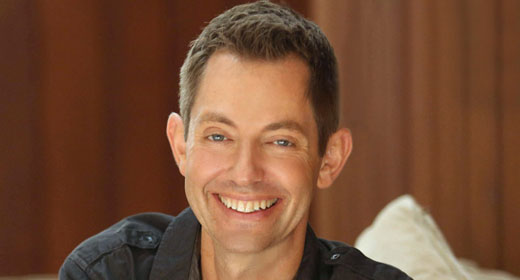by Swami Krishnananda: It is difficult to believe that the implications of the teachings of Patanjali can be easily grasped even by the highest academic intellect, because it is nothing but intricate practice that is being taught in this system. It is not merely a theory, not a doctrine or a faith or a religion that is propounded in these famous aphorisms. It is a technique of practice or conduct in personal life which is supposed to go into the very roots and vitals of the system and bring about a thorough transformation of the various patterns of manifestation of the individual organism. The system of Patanjali is an utter realism in the sense that it does not go beyond the ken of immediate experience or perception at any stage of practice. It avoids any kind of extreme idealism or theory or dogma and concerns itself only with those aspects and features of experience in human life which are part and parcel of one’s practical existence.
It is not merely a theory, not a doctrine or a faith or a religion that is propounded in these famous aphorisms. It is a technique of practice or conduct in personal life which is supposed to go into the very roots and vitals of the system and bring about a thorough transformation of the various patterns of manifestation of the individual organism. The system of Patanjali is an utter realism in the sense that it does not go beyond the ken of immediate experience or perception at any stage of practice. It avoids any kind of extreme idealism or theory or dogma and concerns itself only with those aspects and features of experience in human life which are part and parcel of one’s practical existence.
In this practice, not one step is missed. Not one step is ever taken into consideration if it had not become a practical content of one’s day-to-day experience. Thus it is that we can very safely call this a scientific method of approach to life. It is scientific because it is the most systematic approach to life and it is the most inclusive of all the approaches. It includes all possible aspects of human nature. It starts from the lowest type of experience and aspires to reach the highest possible existence. It is a very graduated technique and it is a system of living that can be applied to every human being.
The Yoga System is an impersonal approach of a psychological character and it may be said to be nothing but psychology applied to practical life, or one may say, it is applied psychology going deeper into the roots of human nature, not exhausting its researches on the conscious level merely as the Western psychologists are prone to do. The levels of human personality are the objects of research here and therefore Yoga is not only psychology and psychoanalysis but also the theory of perception of things. It is also a philosophy, a metaphysics, and it is at the same time an ethical and moral goal – it is the highest spiritual philosophy. So you have in it everything that any system of thought can regard as the essential of a teaching on the Higher Life.
It is not possible to understand this system unless one has some acquaintance with psychology, because it is a system of psychological analysis and synthesis. It analyses threadbare every fibre of human nature and personality and also synthesises these analysed parts into an organic whole. What it does exactly is the isolating of the parts of human nature for the purpose of arranging them once again into a new pattern altogether – a necessity that arises on account of the fact that the existing pattern is a chaotic one. The parts or aspects of human nature as they operate in normal or ordinary life are disorganised patterns, a kind of confusion and a muddle, which is the reason why people are unable to think dispassionately, impersonally and thoroughly. Patanjali’s system adopts a diagnostic system of analysis. It pulls apart every aspect of human nature into its minutest components. For this purpose, it lets nature be reduced to the minimum essentials to be analysed, until you find it is not possible to analyse further, exactly as in medical science. And then the constructive aspect of the system begins.
What is the condition in which one is now at this given moment of time, and what is the reason for the prevalence of this condition? The prevalence of any particular state is due to the character of a particular pattern of the arrangement of the parts of the personality as it appears on the surface. Is it a satisfactory pattern, is the question. Well, the answer is simple. It is not a satisfactory one; otherwise there would have been no sorrow, no aspiration to achieve something more than what we have already. That we are restless and hope to achieve something more than what we have at present is an indication that our present system of living is inadequate, incomplete and therefore not satisfactory. This is the stand which the Yoga System, as a psychology, takes, and tries to reorganise this system into a proper form or shape which can reflect in its perfection the character of Reality. The sufferings of human life, the sorrows through which we pass and the shortcomings that we see in our personal lives are an indication that the present pattern of our psychological set-up is incapable of reflecting the character of Reality.
The Real is a perfect whole – it is an invisible completeness – and what we seek in life is perfection or completeness, because Reality is a well-ordered completeness. When this ordered system of completeness or perfection is reflected in the psychological condition of human nature at any given moment of time, then there is a feeling of satisfaction, joy, a sense of freedom and a feeling that we have achieved something worthwhile in life. But the absence of this feeling is an indication, again, that the nature of Reality has not been reflected in our system, which means that the medium of reflection is not properly constructed. So the Yoga System of Patanjali endeavours to prepare the individual for the reception of the nature of Reality into one’s system, so that life becomes an ordered whole not only personally or individually but also in all its manifestations such as social life, political life, etc.
The Yoga System, therefore, is a universal science; it is not an individual practice that one adopts privately in one’s room for one’s own salvation. There is always a misconception born of a shortsighted notion of the purpose of the practice of Yoga, due to which many people wrongly think that the practice of Yoga is a system of an individual salvation. It is not. Though the preparatory techniques are individual in the sense that it is ‘you’ or ‘I’ that have to make the preparation for the ideal on hand, yet the aim is not personal. The preparation may appear to be personal or individual, because everyone is to be prepared in a specific manner, according to one’s endowments, but the purpose is something more than the individual organism or thought-pattern. The aim of this practice is a growth, gradually, into universality, which is the mother even of the individual natures or personalities that are visible in practical life. We are persons, individuals, not apparently related to one another. That is the reason for the prevalence of selfishness in human life. But, that we are really unrelated to one another is not a fact. There is an interconnectedness among individuals which is hidden behind their visible disparity, and which is the reflection of the universal in their personal and social lives.
The universal need not necessarily be the absolute universal always. When we speak of the universal from the point of view of the system of Yoga according to Patanjali, the universal is any comprehensive state which immediately supersedes any given condition of psychological life. When there is a vision of the presence of a more inclusive state psychologically, socially and spiritually, one is supposed to be aware of the presence of a universal transcending one’s individual existence. And when the next higher state of universality is envisaged, that becomes a part of one’s practical experience. These are actually the stages of practice known as Samapattis, sometimes known as Samadhis – acquirements or achievements. We have very strange terms used in the Sutras of Patanjali such as the words Vitarka, Vichara, Ananda, Asmita, etc., all which refer to the various gradations of the manifestation of the universal in individual experience wherein and by which the individual becomes gradually universalised, stage by stage. So it is from this point of view that the Yoga System of Patanjali is a realistic system. It does not abrogate from its approach any ideal of life or any perceivable object of experience.
The psychological analysis preparatory for this is something very important and that is the most difficult part of the practice. The parts of human nature, which is essentially psychological, are known as Klesas, or afflictions. The term Klesa is used by Patanjali to designate a particular psychological function merely because of the fact that every psychological function is an ‘affliction’ of the individual. It is an unnatural state of affairs; it is something not real. It is an apparent manifestation which is supposed to be overcome, transcended, as a sort of disease. The reason why every psychological function is regarded as a Klesa is because the function of the mind or the psychological organism as it is seen in normal life is motivated by factors which are incompatible with the nature of Reality.
The very act of perception of an object cannot be regarded as a contact with real objects, because these realities which are invested with the forms which one sees with one’s eyes, due to which one regards them as realities, are only apparent formations or configurations which are presented before the eyes due to the operation of powers or forces invisible to the naked eyes. The human system cannot, therefore, grasp the real cause behind the appearance of these objects. You see many things in front of you and there is usually no reason to believe that there is something wrong with these perceptions, which are called normal perceptions. But, what you call ‘normal’ perception need not necessarily be a ‘real’ perception from the point of view of Yoga at least. It is not ‘real’ because it is ‘subject to transcendence’. The definition of Reality is that it is that which is not subject to transcendence by any kind of experience. If any experience is subject to contradiction by another type of experience at any time in the future, we cannot call that experience real. Now, can we say that our experiences in the waking state are not subject to contradiction? No one can say that. We do not know what experiences we passed through in our previous lives. Where are our relatives and possessions that we held as dear in our past existences? What happened to them? No one thinks of these things, because to think of them would be a horror. Reality would look like a horror to a person sunk in ignorance.
Ignorance (Avidya) is the breeding ground of all the sorrows of mankind, due to which there is attachment to immediate perception. There is Raga and Dvesha, attraction and repulsion. There is like for those experiences which are regarded as desirable, and a natural dislike for those experiences which are the opposite of or different from the types of experience which we regard as desirable to the present state of the mind. That which we call desirable, pleasant, beautiful, etc. is that arrangement of things which is compatible with the arrangement of the mind in the present set-up of current affairs. The condition of the mind at any moment of time is the outcome or effect of those forces, invisible of course, which have become responsible for the manifestation of the personality in this physical existence – one’s bodily organism, way of thinking and social relationship – Jati, Ayu and Bhoga. All these experiences which we take as the only reality today are a fraction or a kind of link in the long chain of development through which the individual has to pass, which development or process is usually called the evolution of the individual. We are completely oblivious of this long chain. We do not know the previous link and we do not know the future link also. We are stuck up in the present link only. This present link is the vast life which we are living today. All what you see – this world, the sun, moon, stars, the stellar system, etc. – is only one link in a long chain of development, which is the evolution of the universe towards a realisation that is totally outside the vision of the mind at the present moment.
So, the loves and hatreds, the likes and dislikes, the attachments and their opposites, which characterise the experiences in our present life are caused by ignorance or Avidya. What is Avidya? It is an ignorance of the true nature of things. The fact is that the present life, the so-called wonderful, vast life, is a small fraction of a vaster existence, which presses itself forward every moment for manifesting itself in higher degrees of intensity, the pressure being called the ‘nisus’ or the urge for evolution. The reason why you are dissatisfied with anything and everything in life at all times, is the presence of this urge of the universe behind you. Can you find one satisfied person in the world? No. The satisfaction does not come because the things that are provided for by this physical existence, this vast universe, this world, to the individual nature at this time cannot satisfy that invisible something, which has reference to the present shape of the individual which is mistaken for the total reality. We are making the gross error of imagining that our present physical or social existence is the only reality conceivable, though it is only one form that is taken by the infinite possibilities which are hidden in the bosoms of Nature, and which are going to be manifested one day or the other, in the future, during the different levels of evolution yet to be passed through, and the inability to grasp the relevance of these future possibilities to the present state of affairs is what is called Avidya or ignorance.
We are unable to connect ourselves with the true state of things. The inability to understand or grasp the relation between appearance and Reality is called ignorance. This is the cause of our present experience, Klesa, etc. These difficulties which are wholly psychological have to be obviated root and branch; this is the purpose of Yoga. The very root of the disease has to be dug out and brought to the surface of consciousness and one has to be made perfectly healthy so that the total reality can be reflected in the personality. That condition in which Reality gets reflected in one’s personality is called the Jivanmukti state; that is the liberated state. Towards this end the Yoga technique endeavours to bring forward the various sides of human nature in its vital connections with the different aspects of Reality manifest as this cosmos.
The Klesas or the psychological functions which we are expected to arrange in a new order altogether for the purpose of harmonising them with the existing nature of things – this endeavour is, in short, the preparation necessary for the practice of Yoga! The various stages mentioned in the system of Patanjali – Yama, Niyama, Asana, etc. – are the gradational processes of establishing communion or harmony with the immediate atmosphere present around oneself. The social atmosphere, the physical body, the Pranas within, the senses that operate inside, the mind that thinks, the intellect that understands and the Spirit that is all-pervading – with all these layers of being we have to set ourselves in tune. Thus, the Yoga System of Patanjali is a graduated technique of setting oneself in tune with the various degrees of the manifestation of Reality. So it is a very satisfactory system, because it takes into consideration every degree of manifestation of Reality, even the worst, the lowest and the grossest of shapes; and from that it rises upward, taking that as its stand, towards the great Absolute.








































